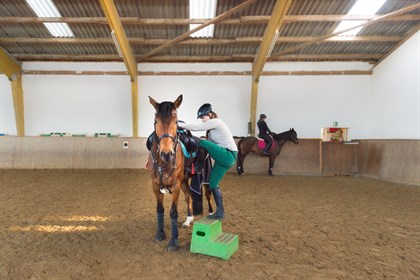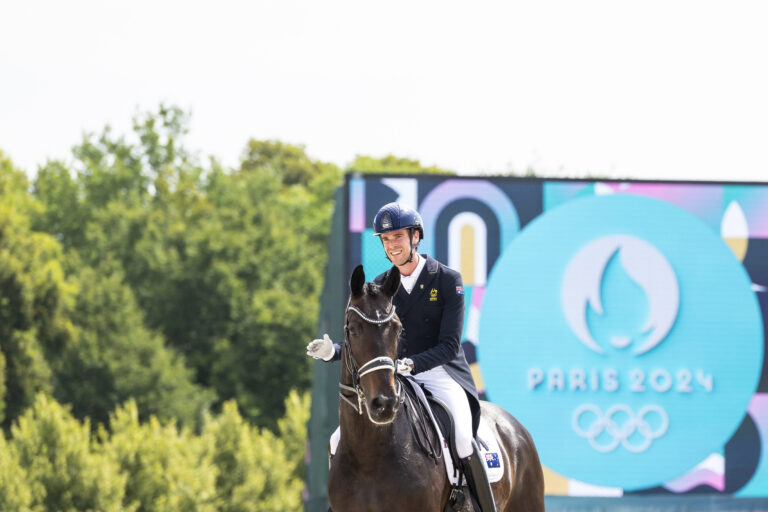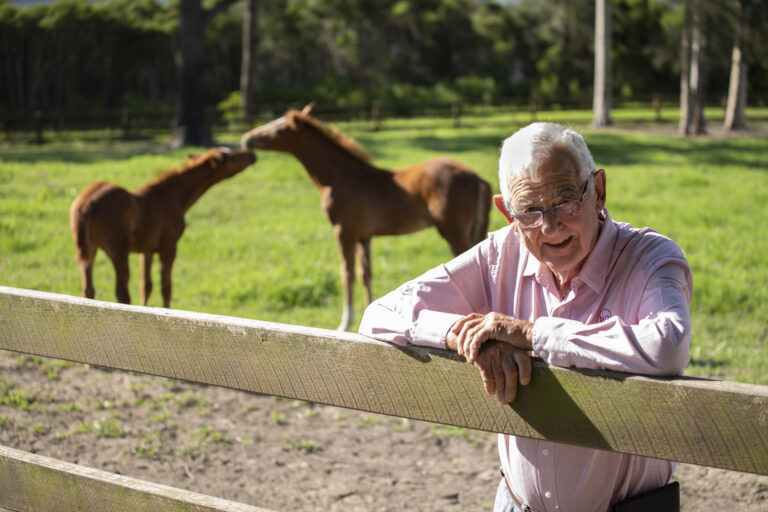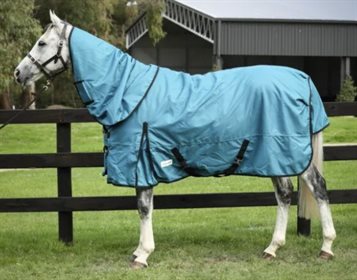This article first appeared in a previous edition of Equestrian Life magazine. To see what is in our latest digital issue, please click here.
Some horse can be tricky to mount.
By Kerry Mack
I have written before about the importance of getting on your horse correctly, and in a way that is least likely to twist his back. I do believe that it is important to train him to stand still properly to be mounted, and have good associations with being mounted. However today I would like to share a tip for getting on a difficult-to-mount horse. This is not a substitute for correct training, but it is a handy trick when you do have to get on a horse that may not stand still, or may object to being mounted. He may lack confidence. There may not be anyone to hold him, or he may get rattled by having too many people around.
If he is difficult you should still take time to allow him to relax and check basic responses from the ground. A few repetitions of stop and go, encouraging him to react quickly and smoothly, and straight. Next check that you can get him to do a turn on the forehand from the ground. Standing on the near side gently bend his neck as far to the left as he can. He should stay still and yield to the rein pressure. Don’t make him keep his legs still. Simply keep pressure gently on until he does stand and bend his neck. Give the rein when he stands still yet bends his neck. Repeat both sides until he gets it. Then ask him to bend his neck and yield to pressure with your hand or a whip on his ribs, close to where your leg would lie if you were on him. He should move his hind legs away from the pressure. If his neck is really bent he is more likely to give the correct response and not move forwards. You do not want him to move his front legs any more than necessary.
He may already know these lessons. It usually doesn’t take long to teach them however.
When you think he is understanding this you can get on. Take the off side rein close to his ears, vey short, and the near side rein short too. With both reins in your left hand also slip your fingers over the cheek strap of the bridle so that you are effectively holding his head with your left hand. He will need to bend his neck around you as you stand in the normal mounting position. You then simply use you right hand to help guide your foot into the stirrup, and grasp the pommel of the saddle and swing up. Actually it is a bit difficult to get on with one hand like this, so best practise it on a reliable horse first so that you are confident about the technique. Do not let go of the cheek strap until you are safely on, and do keep his neck bent. If his head is facing backwards it is unlikely that he can buck or rear. A bent horse is not a strong horse, he can’t use the strength of his neck leveraged against you, nor can he use his neck to counter balance athletic naughtiness.
If he does move he will tend to move in a small circle and you will have some control. Sit in a defensive posture, legs off him but a little in front of you, leaning back a little. If he doesn’t want to move then you can ask him to do a turn on the forehand, moving his legs but not allowing too much forward movement, and keeping his neck bent and his head facing backwards until you feel him breathe out and relax a little. Slowly allow him to move out onto a small circle and gradually allow the circle to get bigger and the neck to become less bent. Try to keep some inside bend however to keep him soft. You can test stop and go responses on a circle with a soft bend. Slowly allow him more forwards.
This is not a substitute for good training but can be a handy tool.
Have fun
Kerry
You can read the latest from Kerry Mack in the February issue of Equestrian Life magazine here.
READ THE LATEST NEWS ARTICLES HERE









